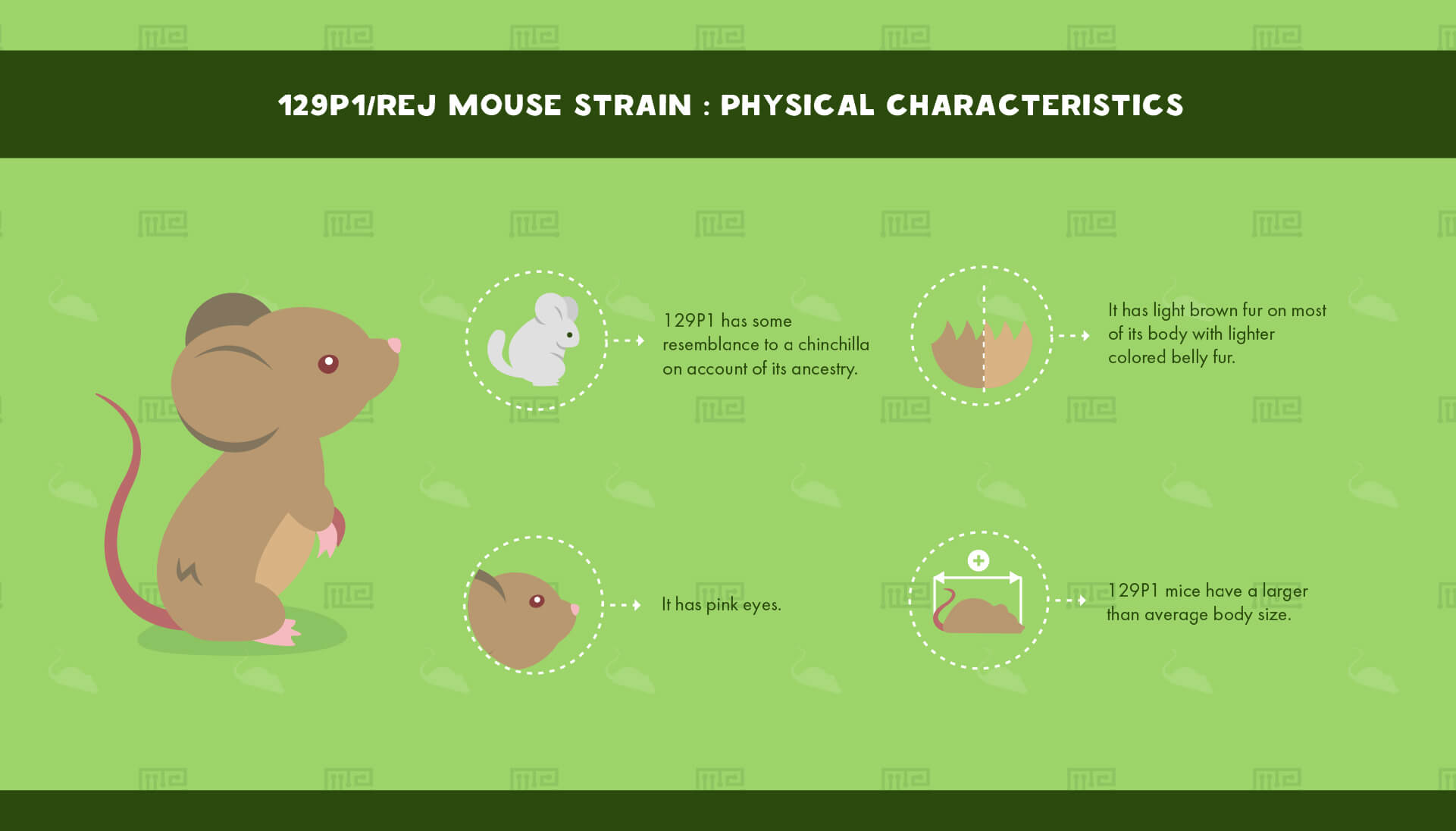Overview
129P1/ReJ, also known as 129P1, is an inbred strain of mouse that is a parental member of the 129 family of strains used in cancer research.[1]
History
The 129 family of strains is derived from a cross between English fancier mice and a stock of chinchillas carried out by Dunn in 1928. They passed from Dunn to Russell in 1945, then on to Hunt and Wynder before finally reaching Runner at the Jackson Laboratory in 1947.[2]
The Re substrain from which 129P1/ReJ is derived comes from a cross that was carried out by the Jackson Laboratory in 1948. Re was developed into 129P1/ReJ via the subline 129/Re-Lama2dy/+ in the 1970s.[3]
Physical Characteristics
As with all the strains in the 129 family, 129P1 has some resemblance to a chinchilla on account of its ancestry. It has light brown fur on most of its body with lighter colored belly fur and pink eyes. 129P1 mice also have a larger than average body size.[3]
Behavioral Characteristics & Handling
The Jackson Laboratory describes this strain as “docile”, suggesting that it should be easy for researchers to handle without it showing undue aggression or anxiety. Researchers who require docile mice should thus feel comfortable using this strain. Also, unlike the related 129P3/J mice, 129P1 are described as good breeders and parents not requiring any special breeding arrangements.[3]
A study comparing the behavior of various 129 family strains found that 129P1 had by far the highest latency to enter an open quadrant, and least time spent in the open quadrants of the elevated zero maze, indicating higher than usual anxiety. 129P1 also fell fastest from the rotarod indicating a deficit in motor coordination.[4]
Health Characteristics
All mice of the 129 strain family have a noted tendency to develop testicular tumors. Parental members of the 129 family such as 129P1 have a lower tumor incidence than some other members, with 129P1 showing an incidence of 5% specifically (slightly more than the closely related 129P3/J strain).[1][2][3]
Aside from this, 129P1 mice exhibit a number of other significant health issues including blood clots in the uterus and adrenal gland, a higher than usual frequency of kidney stones, hearing loss resulting from mutant cadherin 23, and susceptibility to Sendai virus.[3]
Major Experimental Uses
On account of their higher than usual incidence of testicular teratomas (see above), 129P1 are mainly of interest to researchers investigating testicular cancer. They are also highlighted for being especially useful in the creation of targeted mutations as a result of embryonic stem cell lines from this strain being readily available.[3]
Additional research applications for 129P1 include in neurobiology, hearing defects and reproductive biology.
References
- 001137 – 129P1/ReJ. 2019. 001137 – 129P1/ReJ. [ONLINE] Available at: https://www.jax.org/strain/001137. [Accessed 12 September 2019].
- MGI – Inbred Strains: 129. 2019. MGI – Inbred Strains: 129. [ONLINE] Available at: http://www.informatics.jax.org/inbred_strains/mouse/docs/129.shtml. [Accessed 12 September 2019].
- The Jackson Laboratory Handbook on Genetically Standardized Mice. 6th ed. 2009. [ONLINE]. Available at: http://jackson.jax.org/rs/444-BUH-304/images/JAX%20Handbook%20Genetically%20Standardized%20Mice.pdf.
- Cook & Bolivar. 2002. Behavioral differences among 129 substrains: implications for knockout and transgenic mice. Behavioral Neuroscience. 116. 4. 600-611.


